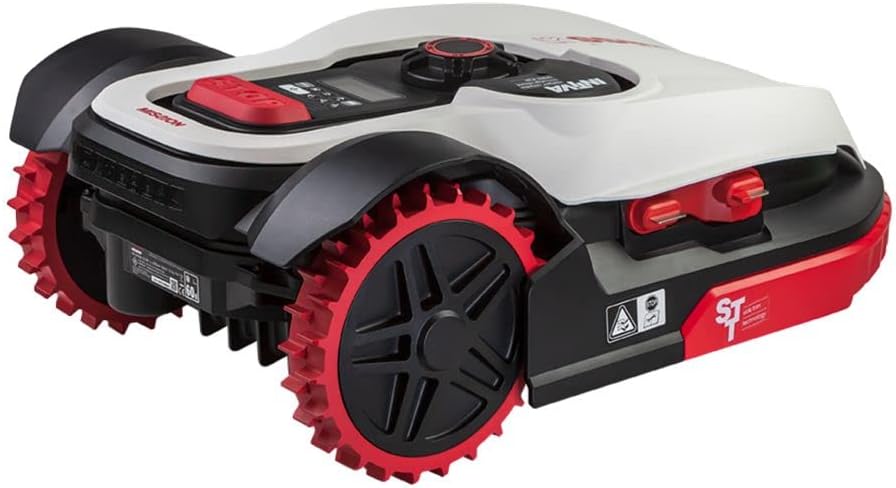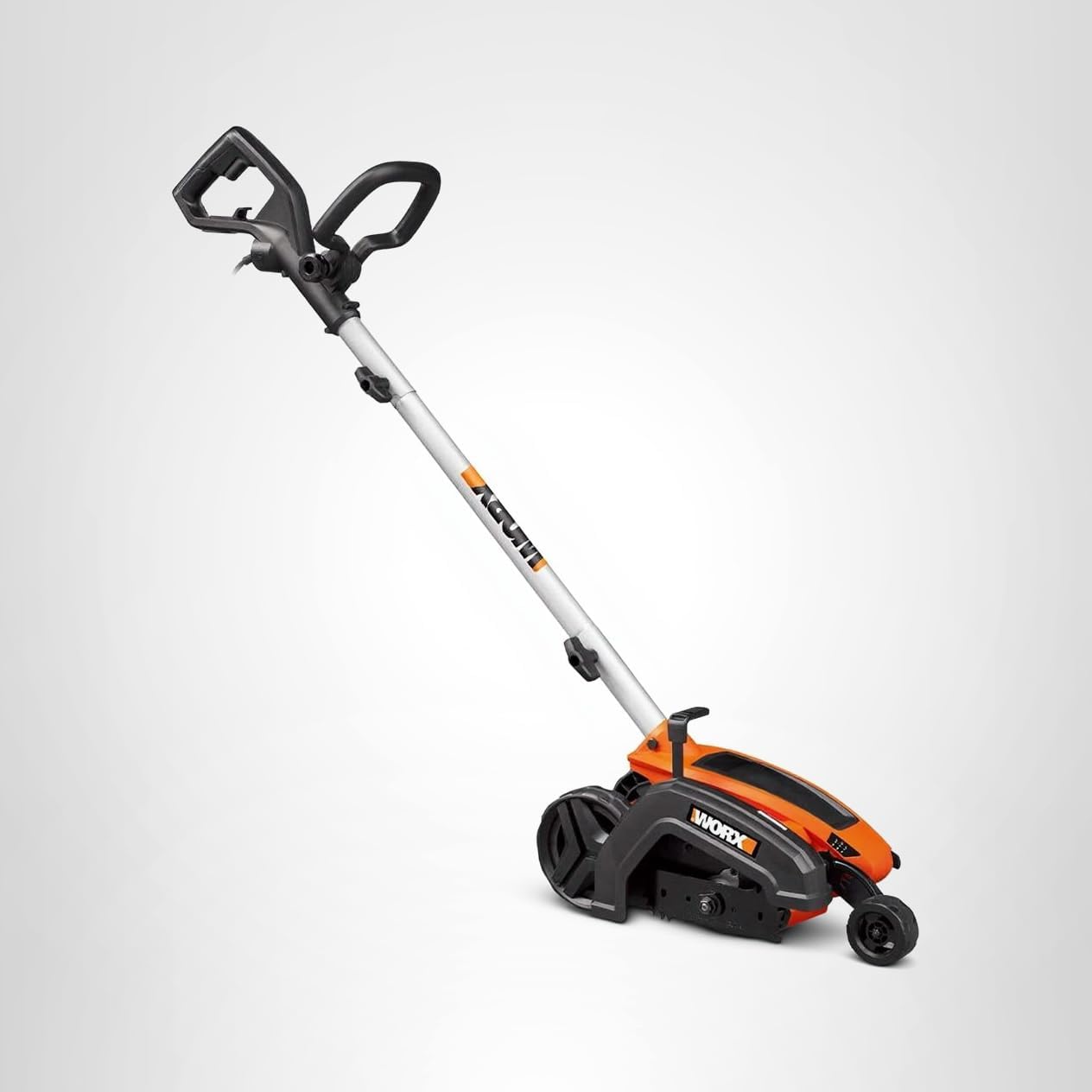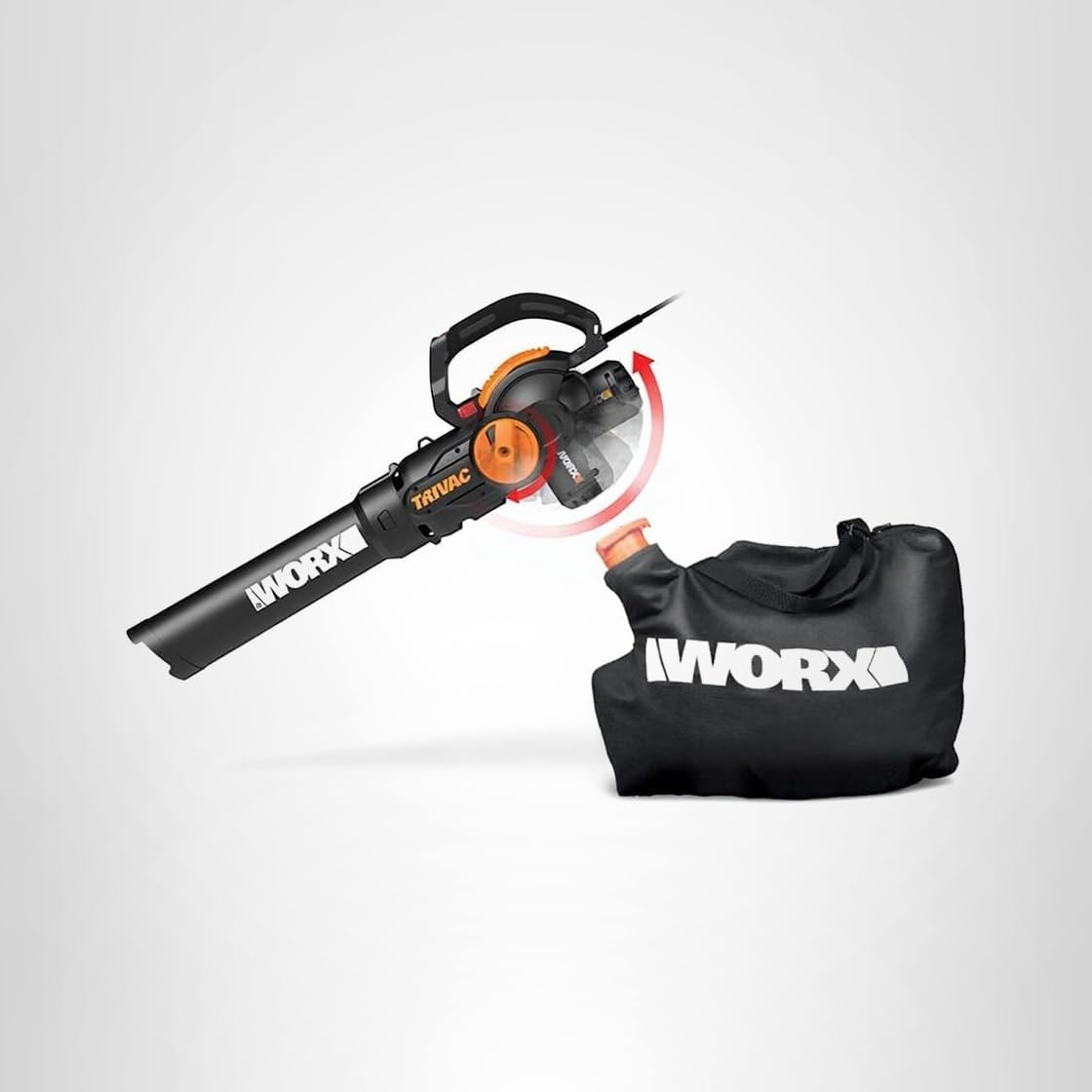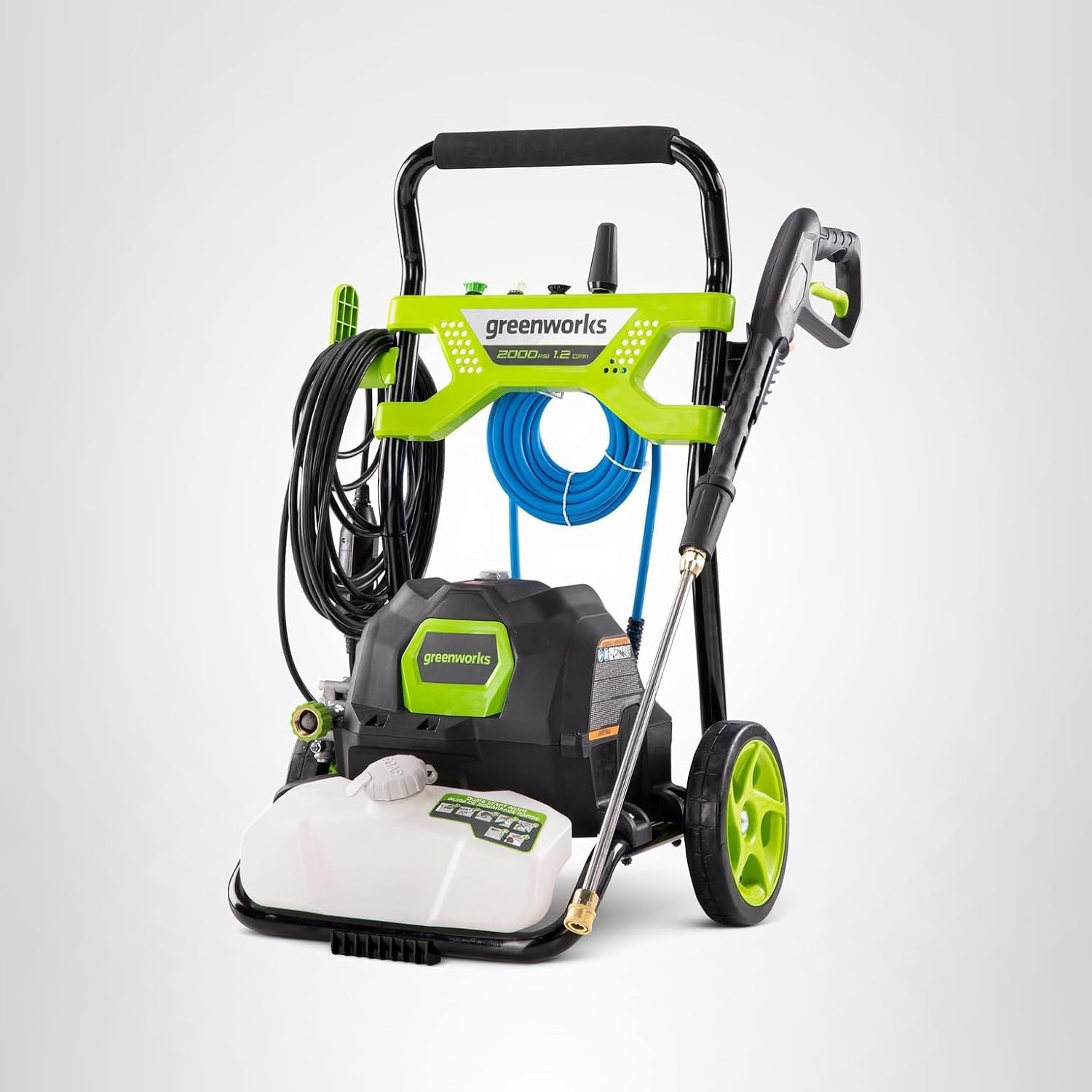Kress Robotic Mowers Review (2025): Is Wire-Free RTK The Future of Lawn Care?
For the last decade, robotic mowers have come with a catch—a digital ball and chain known as the boundary wire. The tedious, time-consuming process of burying or staking a wire around your entire property has been the single biggest barrier to entry for many homeowners. It was a necessary evil to keep the robot contained. But what if it wasn’t necessary anymore? What if a mower could know its exact position on your lawn, down to the centimeter, with no wire required?
This is the revolutionary promise of Kress and its lineup of RTK-powered robotic mowers. Kress, a brand with deep roots in professional German engineering, has entered the U.S. market with a technology that aims to solve the biggest problem in robotic mowing. Instead of a physical wire, their mowers use a network of satellites and a local base station to navigate with pinpoint accuracy, mowing in perfect, systematic lines and managing complex yards with an intelligence that older models can’t match.
But is this new technology ready for prime time? Is it reliable enough to justify its premium price? To find out, we spent the entire mowing season with the Kress Mission series. We tested its setup, pushed its navigation to the limits in a yard with complex obstacles and tree cover, and evaluated if the wire-free experience is truly the game-changer it claims to be. This is our exhaustive, hands-on review.
The End of the Wire? A Deep Dive into Kress’s RTK Technology
Before we can review the mower, we have to understand the groundbreaking technology that powers it. Most of us are familiar with GPS (Global Positioning System) from our phones or cars. Standard GPS is accurate to within a few meters, which is fine for getting you to the right street, but it’s not nearly precise enough for a lawn mower that needs to cut a straight line and stop exactly at the edge of a flower bed.
This is where **RTK (Real-Time Kinematic)** comes in. Think of it as “GPS on steroids.”
- How it Works: An RTK system uses two components: the mower itself, which has a satellite receiver (GNSS), and a small, stationary base station antenna that you place on your roof or a pole in an open area of your yard.
- The Magic of Correction: The base station antenna constantly receives satellite signals and, because it’s stationary, it knows its exact position. It can detect the tiny errors and atmospheric distortions in the GPS signal. It then calculates a correction signal and transmits it in real-time to the mower.
- The Result: The mower applies this correction signal to its own GPS data, allowing it to calculate its position with **centimeter-level accuracy.**
This incredible precision is what allows Kress mowers to operate without a boundary wire. They don’t need a fence because they know, down to the inch, exactly where the edge of your lawn is. This technology is a massive leap forward and the key differentiator for premium brands like Kress. Understanding this foundation is as important as any other aspect of advanced yard maintenance, which we cover in our comprehensive Lawn Care 101 guide.
In-Depth Review: Kress Mission 1500 KR133A

| Model: | Kress Mission 1500 (KR133A) |
| Coverage: | Up to 0.62 Acres (27,000 sq. ft.) |
| Navigation: | Wire-Free RTK-GNSS |
| Mowing Pattern: | Systematic Straight Lines |
| Max Slope: | 45% / 24 degrees |
| Cutting Deck: | 8.6-inch Floating, Offset Deck |
| Connectivity: | 4G Cellular + Wi-Fi |
| Key Feature: | Centimeter-level accuracy for true wire-free mowing. |
The Verdict: The Future of Autonomous Mowing, Today
The Kress Mission 1500 is a phenomenal piece of engineering that delivers on the promise of a truly wire-free, autonomous mowing experience. Its RTK navigation is remarkably accurate, its mowing performance is top-tier, and its app is powerful and intuitive. For the tech-savvy homeowner with a medium to large yard who is willing to invest in the latest technology, the Kress Mission is a game-changer that makes traditional robotic mowers feel obsolete.
The Setup Experience: A 30-Minute Revolution
This is where the Kress system earns its price tag. Instead of spending hours staking a boundary wire, the setup is almost entirely digital. First, we installed the RTK base station antenna on a roof eave with a clear view of the sky. Then, using the Kress app, you connect to the mower via Bluetooth and use your phone as a remote control to “drive” the mower once around the entire perimeter of your lawn. As you drive, the mower records its centimeter-accurate position, creating a precise virtual map. You do the same to create no-go zones for flower beds and to map pathways across driveways. The entire process for our half-acre test lawn took less than 30 minutes. It was an astonishingly simple and satisfying experience.
Deep Dive: Mowing Performance & Pattern
Unlike boundary-wire mowers that mow in a random pattern, the Kress mows in perfect, systematic, parallel lines, just like a professional landscaper. This is not only aesthetically pleasing but also incredibly efficient. The mower knows exactly where it has been and where it needs to go next, ensuring 100% coverage with no missed spots. The floating cutting deck follows the contours of the ground to prevent scalping, and the offset blade design allows it to cut very close to the virtual boundary. The daily micro-mulching process significantly improved our test lawn’s health, creating a dense turf that responds beautifully to a good lawn fertilizing program.
Deep Dive: Obstacle Avoidance & App Control
The Kress Mission series uses an advanced Obstacle Avoidance System (OAS) that combines ultrasonic sensors and machine vision. In our tests, it was remarkably adept at “seeing” and gracefully maneuvering around unexpected obstacles like garden hoses, toys left on the lawn, and patio furniture. It slows down as it approaches an object and steers around it, rather than just bumping into it. The app is a powerhouse, allowing you to manage multiple zones, set custom cutting heights for each, and track the mower’s progress in real-time on a satellite map of your property. The integrated 4G connection means you can communicate with your mower even if your home Wi-Fi doesn’t reach the far corners of your yard.
- Truly wire-free setup is a massive time-saver
- Centimeter-level RTK accuracy is incredibly reliable
- Systematic line-by-line mowing is efficient and looks professional
- Advanced obstacle avoidance system is very effective
- Powerful app with multi-zone management
- Significant premium price point
- Requires a clear view of the sky for the RTK antenna
- Cellular connection may require a data plan after the first few years
Kress vs. The Competition: Where Does It Stand?
The robotic mower market is evolving rapidly. To understand Kress’s place, it’s essential to compare it to the established alternatives.
Kress (RTK) vs. Boundary Wire Mowers (like WORX Landroid)
This is the most significant comparison. Boundary wire mowers have been the standard for years, and models like the one in our WORX Landroid review offer incredible value.
- Setup: Kress wins, hands down. A 30-minute virtual mapping session versus a 3-4 hour physical wire installation is no contest.
- Precision & Efficiency: Kress wins. Its systematic, straight-line mowing is more efficient and guarantees 100% coverage. Wire-based mowers use a random pattern which can miss spots on the first pass.
- Flexibility: Kress wins. Want to add a new flower bed? Just remap a no-go zone in the app in minutes. With a wire, you’d have to cut, splice, and re-bury the wire.
- Price: WORX Landroid and other wire-based mowers win. They are significantly more affordable, offering the core benefit of automated mowing for a much lower cost of entry.
The Takeaway: The Landroid is the smart choice for the budget-conscious DIYer. The Kress is the premium choice for those who want the absolute best and most convenient technology.
Kress (RTK) vs. Other Wire-Free Mowers (Vision-Based)
Other brands are emerging with wire-free mowers that use cameras and AI (vision-based navigation) instead of RTK. While promising, this technology has its own set of challenges. Vision-based systems can be confused by changing light conditions, long shadows, or indistinct lawn edges. In our experience, RTK is currently the more robust and reliable technology for defining and holding a precise boundary, especially in complex yards. While the entire market is exciting, Kress’s polished RTK implementation currently feels like the most mature wire-free solution available to consumers.
Frequently Asked Questions About Kress Mowers
What happens if the RTK satellite signal is blocked by trees?
This is a critical consideration. The RTK antenna needs a mostly clear view of the sky. However, the Kress system is designed with dead-reckoning algorithms. If the mower temporarily loses the signal while under a dense tree canopy, it uses its wheel sensors and inertial measurement unit to continue mowing in a straight line until it reacquires the signal. For yards with extremely dense, continuous tree cover, you may experience some issues, but for typical suburban yards with scattered trees, the system works very well.
Do I still need other lawn tools if I have a Kress mower?
Yes. A robotic mower, even one as advanced as Kress, automates the primary task of mowing but does not eliminate the need for detailing. The offset deck cuts very close to the edge, but for a perfect, crisp finish, you will still need one of the best lawn trimmers for cleanup around obstacles and one of the best lawn edgers for that perfect sidewalk line. Likewise, it can’t handle heavy leaf cover, so one of the best lawn blowers is essential for fall cleanup. A Kress mower is a centerpiece, not the entirety, of the best lawn tools you can own.
Can the Kress mower cross a driveway to mow a separate area?
Yes. This is a major advantage of the Kress system. In the app, you can map out multiple, disconnected lawn zones and create “pathways” across non-grass surfaces like driveways or walkways. The mower will automatically navigate these paths to travel between zones, mow them, and return to its charging station.
Is the Kress system secure against theft?
Yes. The Kress mowers are equipped with anti-theft features. The integrated 4G and GPS allow you to track the mower’s location in real-time from the app. You can also set a geofence, and if the mower is taken outside this designated area, you will receive an immediate notification on your phone, and the mower will be locked and unusable.
How does the Kress system impact overall lawn health?
It has a profoundly positive impact. The daily micro-mulching provides a constant, natural source of nutrients, which improves soil health and water retention. A healthier lawn is naturally more resistant to disease and invasive pests, complementing your existing lawn pest control efforts. Kress is a top contender in our overall guide to the best robotic lawn mowers precisely because of its positive impact on turf quality.
Final Verdict: A Glimpse Into the Future
The Kress Mission RTK system is more than just a great lawn mower; it’s a statement about the future of home automation. It successfully eliminates the single greatest pain point of robotic mowing—the boundary wire—and replaces it with a system of superior accuracy, efficiency, and flexibility. The systematic mowing pattern, advanced obstacle avoidance, and powerful multi-zone management are features that truly set it apart.
However, this futuristic performance comes at a premium price. It represents the top-tier of the market, and its cost will be a significant factor for many. But for those who are willing to invest in the best, for those who value cutting-edge technology that saves significant time and delivers a flawless result, the Kress robotic mower is not just a worthy purchase; it’s the new gold standard.
Are you ready to cut the cord (and the wire)? Let us know your thoughts on RTK technology in the comments below!























